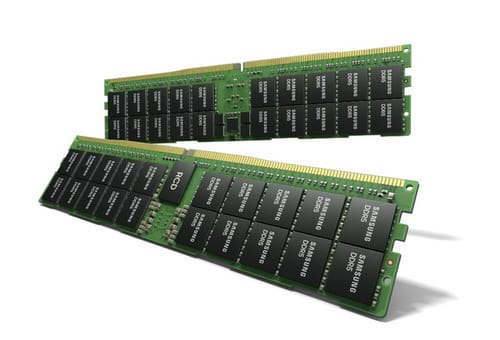 |
| Samsung is developing a 512GB DDR5 memory module |
Samsung has introduced a new RAM module that demonstrates DDR5's capabilities in terms of speed and capacity.
DDR5 is a new DRAM standard that meets the urgent needs of high-performance computing, artificial intelligence, machine learning, and data analysis applications.
According to Samsung, the 512GB DDR5 drive is the first drive to use HKMG processing technology. 7200MB / s is twice as fast as DDR4.
This unit currently focuses on high-performance computing, artificial intelligence, and machine learning functions that require a large amount of data. However, DDR5 is integrated into the computer to support the development of games and other applications.
Samsung first used HKMG with the GDDR6 chip used in the GPU in 2018.
By expanding the use of DDR5, Samsung is building its leadership position in next-generation DRAM technology.
HKMG technology developed by Intel and uses traditional polysilicon gate electrodes instead of silicon and metal, which can increase chip density while reducing leakage current.
Each chip uses eight layers of 16GB DRAM to provide a maximum capacity of 512GB. So Samsung needs 32 to build a 512GB RAM module.
Samsung said that in addition to increasing speed and capacity, the chip also consumes 13% less energy than devices without HKMG technology, making it an ideal choice for data centers.
The latest product of Samsung has a speed of 7200Mbps, which can allow for a transmission speed of about 57.6Gb / s on a single channel.
In a Samsung press release, Intel said the memory will be compatible with the next generation of scalable Sapphire Rapids Xeon processor.
The architecture uses an 8-channel DDR5 memory controller, which can display the memory configuration for several terabytes and the memory transfer speed can reach up to 460GB per second.
Meanwhile, the first consumer PCs could appear when AMD launches its Zen 4 platform in 2022, which will support DDR5.
Samsung DDR5 memory also features ECC technology to improve reliability. The hardware it contains is designed to help power computing devices needed for medical research, financial markets, autonomous leadership, and smart cities.
